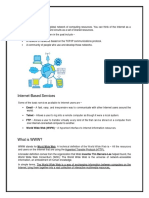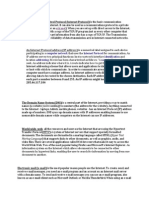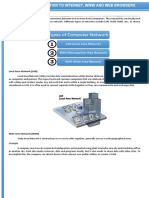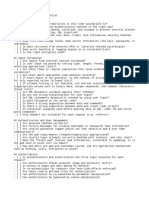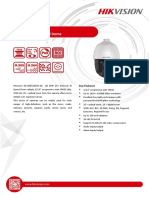0% found this document useful (0 votes)
14 views3 pagesNotes of Network
The document provides an overview of computer networks, the Internet, and various related technologies such as the World Wide Web, web servers, and web clients. It discusses the uses of the Internet, including communication, information sharing, and online business activities, as well as protocols like HTTP, FTP, and SMTP. Additionally, it explains concepts like web pages, blogging, newsgroups, and IP addresses.
Uploaded by
Aarav SinghCopyright
© © All Rights Reserved
We take content rights seriously. If you suspect this is your content, claim it here.
Available Formats
Download as DOCX, PDF, TXT or read online on Scribd
0% found this document useful (0 votes)
14 views3 pagesNotes of Network
The document provides an overview of computer networks, the Internet, and various related technologies such as the World Wide Web, web servers, and web clients. It discusses the uses of the Internet, including communication, information sharing, and online business activities, as well as protocols like HTTP, FTP, and SMTP. Additionally, it explains concepts like web pages, blogging, newsgroups, and IP addresses.
Uploaded by
Aarav SinghCopyright
© © All Rights Reserved
We take content rights seriously. If you suspect this is your content, claim it here.
Available Formats
Download as DOCX, PDF, TXT or read online on Scribd
/ 3






